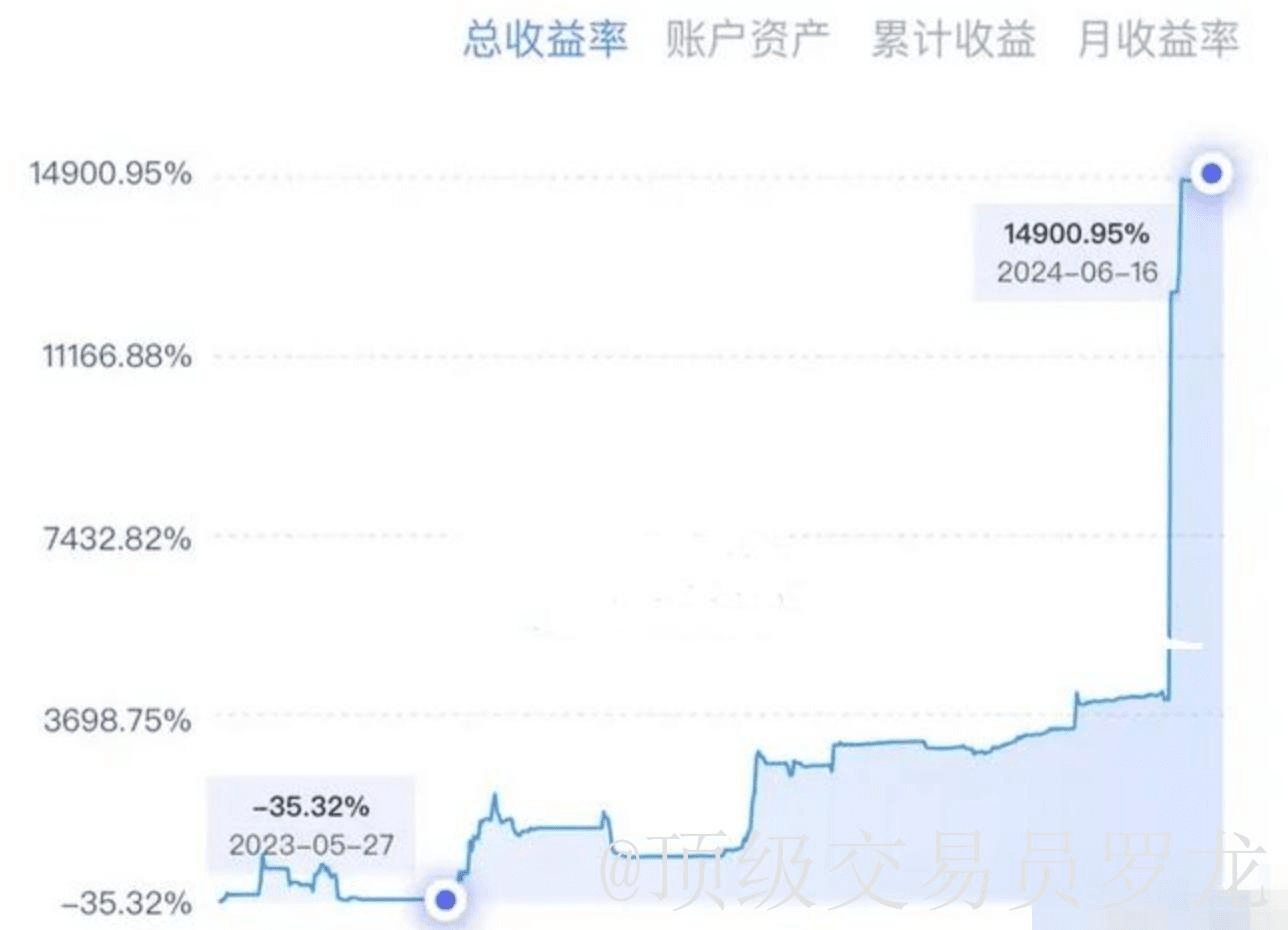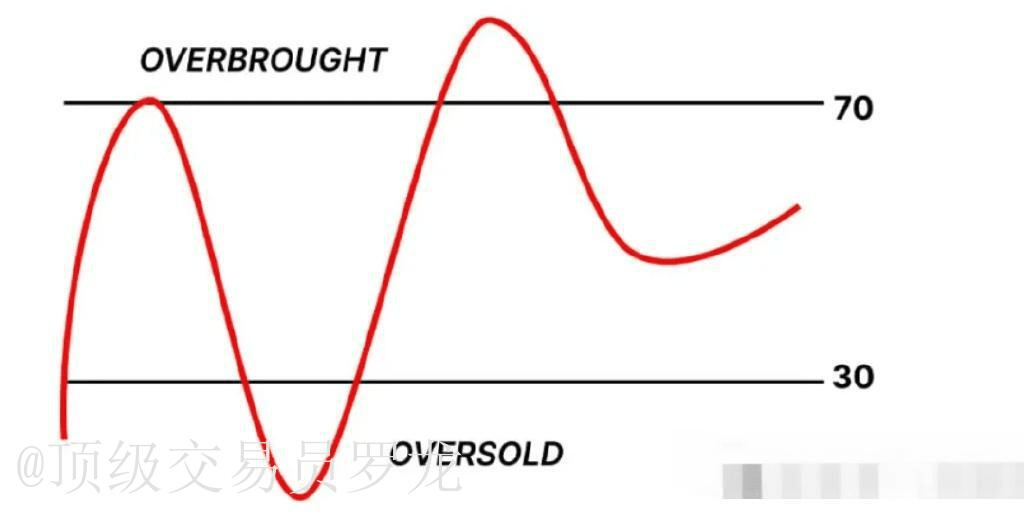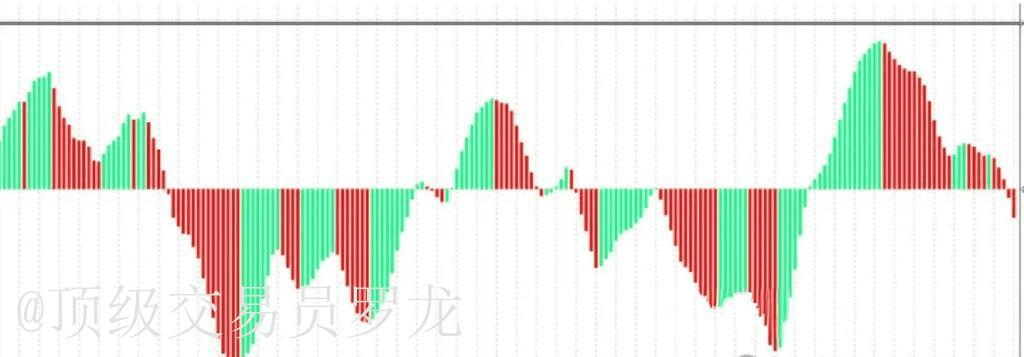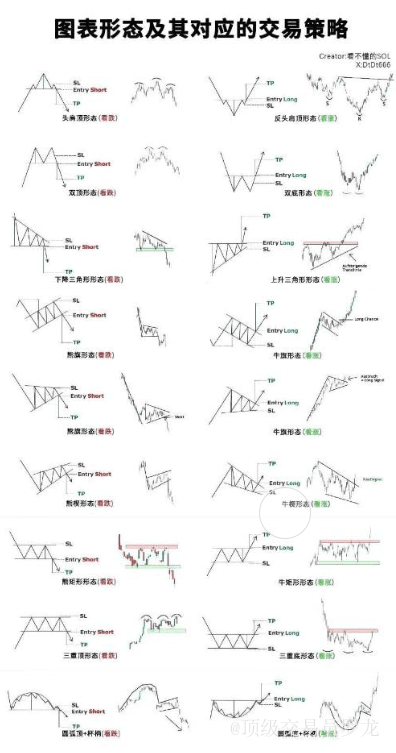There is indeed a strategy for trading cryptocurrencies that guarantees profit. My trading method is very simple and practical. In just one year, I traded from three thousand to eight figures, only focusing on one pattern, entering only when I see an opportunity, and not trading without a pattern, maintaining a win rate of over 90% for five years!
This method has been personally tested: from May 2023 to June 2024, over 502 days and nights, going from 3000 to 3 million, achieving a return of 14838%. In the cryptocurrency market, if you want to grow small funds into large ones, the only method is to roll the account!
Today I am sharing this method with those who are destined to find it. If you also want to share in the profits in the cryptocurrency circle, then take a few minutes to study it carefully, then slowly absorb and practice to form your own stable profit system in the cryptocurrency circle!

In the field of Bitcoin trading, technical analysis can play an important role, and oscillators are key tools. After decades of development, oscillators assist traders in making informed decisions by analyzing price momentum and market conditions. This article explores the history and usage of key oscillators utilized in Bitcoin trading.
Oscillators and Their Importance
Since the early 20th century, oscillators have been an indispensable part of technical analysis, initially used in the stock market. As traders sought tools to predict market trends, oscillators began to gain popularity in the 1970s. These mathematical structures measure the momentum of asset prices, providing insights into potential overbought or oversold conditions. In the tumultuous world of Bitcoin trading, oscillators provide traders with an effective way to cope with price fluctuations.
Relative Strength Index (RSI)
The Relative Strength Index (RSI) was developed by J. Welles Wilder Jr. in 1978, and it is a momentum oscillator used to measure the speed and change of price movements. The RSI value fluctuates between 0 and 100, with a value above 70 indicating overbought conditions and below 30 indicating oversold conditions. For BTC traders, RSI is an important tool for identifying potential reversal points for Bitcoin, helping to make strategic entry and exit decisions.

Random
The Stochastic Oscillator was developed by George Lane in the late 1950s. It compares a specific closing price of an asset to its price range over a specified period. The principle is that in a rising market, prices tend to close near the high, while in a declining market, prices tend to close near the low. BTC traders use the Stochastic Oscillator to identify momentum and potential turning points by analyzing the %K and %D lines.

The Stochastic Oscillator is visualized through a chart that contains two main lines: the %K line and the %D line. The %K line is calculated by comparing Bitcoin's closing price to the price range over a specified period, producing a line that reacts quickly and closely follows price movements. The %D line is smoother and slower, being a 3-period moving average of the %K line, providing a signal line that crosses above and below the %K line at key points. The y-axis of the chart ranges from 0 to 100, with horizontal lines marked at 20 and 80 to indicate oversold and overbought levels.
Commodity Channel Index (CCI)
Commodity Channel Index (CCI) was created by Donald Lambert in 1980 to measure the difference between asset prices and their statistical averages. Although originally developed for commodities, it has been widely applied in various markets, including Bitcoin trading. Traders use CCI to identify cyclical trends in Bitcoin prices, helping to predict potential price reversals and capitalize on trading opportunities in Bitcoin.
Average Directional Index (ADX)
Welles Wilder Jr. also introduced the Average Directional Index (ADX) in 1978 to measure the strength of trends rather than their direction. The ADX value ranges from 0 to 100, with higher values indicating stronger trends. In cryptocurrency trading, ADX helps traders assess the strength of current trends, enabling them to make more informed entry or exit decisions based on trend strength rather than direction.
Awesome Oscillator (AO)
Developed by Bill Williams, the Awesome Oscillator (AO) measures market momentum by comparing the 34-period and 5-period simple moving averages. AO helps BTC traders identify potential trend changes and shifts in market momentum. By analyzing the histogram bars, traders can gain insights into potential market strength and make more informed trading decisions.

In technical analysis, AO is graphically represented as a histogram oscillating around the zero line, measuring market momentum by calculating the difference between the 34-period and 5-period simple moving averages (SMA) using the formula (highest + lowest) / 2. The histogram bars are green or red, indicating rising or falling momentum, respectively; a green bar appears when the current bar is higher than the previous one, indicating increasing momentum, while a red bar appears when the current bar is lower, indicating decreasing momentum.
Momentum Oscillator (MO)
The Momentum Oscillator (MO) measures the rate of change of asset prices over a specific period. For BTC traders, this is a simple yet powerful tool for measuring the speed of price changes. By comparing the current price to previous prices, traders can identify bullish or bearish momentum, helping to predict potential continuation or reversal of Bitcoin prices.
Moving Average Convergence Divergence (MACD)
Moving Average Convergence Divergence (MACD) was created by Gerald Appel in the late 1970s and is a trend-following momentum indicator. MACD consists of the MACD line, signal line, and histogram, helping traders identify potential buy and sell signals. For BTC traders, MACD is very useful for understanding market momentum and trend direction, aiding in timely trading decisions.

In technical analysis, MACD is represented through a dual line chart, helping to identify changes in momentum, direction, and strength of Bitcoin price trends. MACD is calculated by subtracting the 26-period EMA from the 12-period EMA, resulting in the so-called MACD line.
Then a signal line is drawn, which is the 9-period EMA of the MACD line itself, to trigger potential buy or sell signals through crossovers. Additionally, the histogram represents the difference between the MACD line and the signal line, visually showing changes in momentum as it widens or narrows.
Although oscillators like RSI, Stochastic Oscillator, CCI, ADX, AO, momentum, and MACD provide important insights for Bitcoin trading, they are not infallible. These tools can help traders cope with BTC volatility by providing valuable data about market conditions and potential price movements.
Traders should combine oscillators with other analytical methods and maintain a cautious attitude, acknowledging that in the dynamic world of Bitcoin trading, no tool can guarantee perfect predictions.
Success is not based on luck; choice is greater than effort; the circle you are in determines your destiny.
A chart that clearly explains K-line patterns that 99% of retail investors cannot understand, but top traders use to make big profits!
K-lines are the code for the flow of funds. If you understand how to interpret K-lines, you have gained the upper hand in trading! However, most retail investors often feel confused when faced with complex K-line patterns. In contrast, top traders can make precise judgments using simple patterns to maximize profits.

New cryptocurrency traders can become seasoned veterans by mastering these ten golden rules!
Friends who haven't made a million after so many years of trading cryptocurrencies, listen to my advice. Follow these ten suggestions; if you do so and still don’t see results, come find me!
1. If there isn’t much money, you need to be meticulous. Just catching one major rise in a year is enough. Don’t always operate with a full position; keep some cash on hand just in case.
2. Cognition determines how much you can earn. If you don’t understand, you won’t make money. Practicing with simulated trading is fine, but trading with real money can be psychologically stressful.
3. When there is good news, if you haven't sold the same day, you need to rush to withdraw when the next day opens high. Once good news is out, everyone thinks about selling, and the price will naturally drop.
4. With holidays approaching, reduce your positions a week in advance, or simply don’t sell. The market is not active during holidays, and prices can fluctuate greatly.
5. Do medium to long-term trading, and you need to have money on hand. When prices rise, sell a bit; when prices fall, buy a bit. This way, you can lower costs and adjust strategies at any time.
6. For short-term trading, find those active trading coins. If no one is trading a coin, buying it can easily lead to being stuck.
7. Remember this rule: those that slowly fall will generally rise back slowly; those that drop sharply will usually rebound quickly.
8. Stop loss is very important. If you buy incorrectly, you must recognize it and stop loss quickly. Don’t think about waiting for the price to come back; preserving your principal is the key.
9. Do short-term trading, look at the 15-minute K-line chart more, and combine it with the KDJ indicator to find buy and sell points. Especially when KDJ is overbought or oversold, the signals are particularly accurate. You should also look at MACD, RSI, and these indicators.
10. Don't learn too many techniques; mastering a few is enough.
Let's talk about the people who make money:
First of all, they are definitely not contract players. None of the contract players I know are making money. Even if they made money at some stage, the final result is still a loss. In fact, the main essence of contracts is gambling, making money through probability. Of course, this has a slightly higher probability than betting, but it's basically similar. Those who make money from contracts are generally those who run contract communities and lead trades. They have long realized that contracts cannot make money, so they go to create contract lead trading communities, with old investors cutting new ones.
Here’s a piece of advice for those who want to recover losses or make money through contracts:
So many people who lose money still stay in the market to recover their losses, but there’s a harsh reality: most people will not be able to recover their losses or make money, especially those who hope to recover losses through contracts. It’s a foolish dream. Those who make money through contracts in the market are extremely rare. Don’t fantasize about why you wouldn’t be that person. To be honest, if you think you can recover losses through contracts, you’re really not cut out for it. It doesn’t matter how much you lose; even if you go bankrupt, it’s impossible to recover through contracts. Therefore, I advise those who want to recover losses through contracts to quit contracts, in other words, to quit gambling.
Let's talk about the people who make money:
First of all, they are definitely not contract players. None of the contract players I know are making money. Even if they made money at some stage, the final result is still a loss. In fact, the main essence of contracts is gambling, making money through probability. Of course, this has a slightly higher probability than betting, but it's basically similar. Those who make money from contracts are generally those who run contract communities and lead trades. They have long realized that contracts cannot make money, so they go to create contract lead trading communities, with old investors cutting new ones.
Here’s a piece of advice for those who want to recover losses or make money through contracts:
So many people who lose money still stay in the market to recover their losses, but there’s a harsh reality: most people will not be able to recover their losses or make money, especially those who hope to recover losses through contracts. It’s a foolish dream. Those who make money through contracts in the market are extremely rare. Don’t fantasize about why you wouldn’t be that person. To be honest, if you think you can recover losses through contracts, you’re really not cut out for it. It doesn’t matter how much you lose; even if you go bankrupt, it’s impossible to recover through contracts. Therefore, I advise those who want to recover losses through contracts to quit contracts, in other words, to quit gambling.
What should spot players who are losing money do? First, if the losses aren’t too much and the principal is still relatively large, that is, if the principal and losses are balanced, then recovering losses is relatively simple and easy. Or rather, if it only needs to turn 5 times or less to recover, that’s possible. But the most important point is the buy-in and sell-out points. If you are stuck at a high position, it becomes difficult. Most people can make money when the bull market starts or during the main upward wave of the bull market. Losing money usually happens because they don’t understand how to unload. After unloading, during the dominant phase of distribution (unloading), repeatedly entering the market at high positions leads to being harvested. Therefore, for retail investors, what position to sell is actually very important, but selling is not the most important thing.
Most importantly, after selling, being able to persist in staying in cash is something that most people cannot do; about 95% of retail players cannot do this, which is fundamentally why most people lose money. If you can sell at a relatively high point, and after selling, not be influenced by analysts in the market or various good news at high prices, and persist in staying in cash, then you truly have secured profits.
To summarize about the people who lose money:
1. Recover the cost within five times.
2. You have to know how to sell.
3. You must know how to stay in cash. Of course, this applies to spot players as well; fewer than 5% of retail investors make money because the trading market is a struggle against human nature: greed, fear, and arrogance. Very few can overcome these.
So who are the ones that make money through trading?
Those who really make money often only learn one strategy and can look at the fundamentals. They buy when the market is at the bottom and can hold on, selling when it has risen enough. They don’t pay too much attention to too many news stories, and when a bull market comes, everything tends to rise. In fact, many novices who play with spot trading find it easier to make money.
There are three small details to pay attention to:
First, sell one-third when the price rises more than 30%.
Secondly, sell one-third when the price rises more than 50%.
Thirdly, if you buy on the day and the next day the price directly breaks below the 60-day moving average, you must sell everything without hesitation!
Although the probability of breaking below the 60-day line using this method is low, risk awareness is essential.
In the cryptocurrency market, preserving your principal is paramount. Even if you sell, just wait for it to meet your buying point again before buying back.
Ultimately, wanting to make money is not difficult; the hard part is execution.
Especially that saying, 'Sell everything if the price breaks below the 60-day moving average,' is something very few can do. But this is the key to making money!
Opportunities are fleeting; corrections are imminent. Stock up on spot trading; altcoins are waiting for you to take advantage! Doubling your investment is not a dream.


